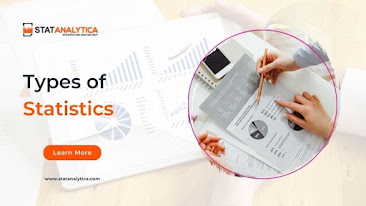Statistics is a field of study that deals with collecting, organizing, analyzing, interpreting, and presenting data. It’s a powerful tool used in various disciplines, from science and business to social sciences and beyond. The uses of statistics are vast, impacting decision-making processes and providing insights into the world around us.
What Is Statistics?
Statistics is all about numbers and data. It’s the science of learning from information and making informed decisions based on that knowledge. In simpler terms, it’s like a detective examining clues to solve a mystery. These clues, or data points, could be anything from the number of people buying a particular product to the average temperature in a city.
Uses of Statistics
Statistics has a broad range of applications across diverse fields. Here are a few areas where statistics plays a crucial role:
Science and Research
In scientific research, statistics is used to analyze experimental results and draw conclusions. For instance, in medicine, statistics help determine the effectiveness of a new drug by analyzing data from clinical trials.
Business and Economics
In the business world, statistics aid in market research, forecasting sales, and understanding consumer behavior. Companies use statistical models to make strategic decisions and predict trends.
Social Sciences
In fields like sociology and psychology, statistics help researchers analyze surveys and experiments to conclude human behavior and social patterns.
Government and Policy Making
Governments use statistics to make informed policy decisions. For instance, census data helps governments understand population demographics and plan resource allocation accordingly.
Sports and Entertainment
Statistics are also widely used in sports to analyze player performance, devise strategies, and even predict outcomes. In entertainment, they help analyze audience preferences and tailor content accordingly.
Read More: Types of Statistical Tests
Types of Statistics
Statistics can be categorized into 2 types:
Descriptive Statistics
Descriptive statistics involves organizing, summarizing, and presenting data in a meaningful way. It describes and summarizes the main features of a dataset. Suppose you have a bag of marbles of various colors. Descriptive statistics help you understand how many marbles are red, blue, or green and the proportion of each color.
Standard measures in descriptive statistics include:
- Measures of Central Tendency: These include mean, median, and mode, which represent the center of a dataset.
- Measures of Dispersion: Variance and standard deviation measure how spread out the values in a dataset are.
- Frequency Distributions: These show the frequency of different outcomes in a sample.
Descriptive statistics are valuable for simplifying large amounts of data into understandable summaries, allowing us to draw initial insights.
Inferential Statistics
On the other hand, inferential statistics involves making predictions or inferences about an enormous population based on a sample of data. Going back to our bag of marbles, if you randomly select ten marbles and find that 70% are red, you could use inferential statistics to estimate what proportion of the entire bag might be red.
Inferential statistics depends on probability theory and hypothesis testing. It helps determine if observed differences in data are due to actual effects or just random chance. This branch of statistics allows us to create apprised guesses or predictions about a population based on a smaller sample.
Note: If you are a student and struggling with your Statistics Homework, then you can get the best Statistics Homework Help from our experts.
The Difference Between Descriptive and Inferential Statistics
Descriptive statistics describe and summarize data. It’s like painting a picture of what the data looks like. Inferential statistics, however, goes beyond and makes predictions or inferences about a more extensive population based on a smaller sample. It’s like using a small piece of the puzzle to understand the whole picture.
In a nutshell, while descriptive statistics focus on summarizing and describing the data at hand, inferential statistics dive deeper into making predictions or inferences about a larger population based on that data.
Conclusion
Statistics serves as a powerful tool in unraveling the complexities of data. Whether it’s in understanding consumer behavior, predicting market trends, or analyzing experimental results, statistics plays a crucial role in decision-making processes across various domains. Descriptive statistics help us summarize and understand data, while inferential statistics enable us to make educated guesses and predictions about larger populations. Together, these branches of statistics form the backbone of modern data analysis, empowering us to make informed decisions in a data-driven world.

Comments
Post a Comment